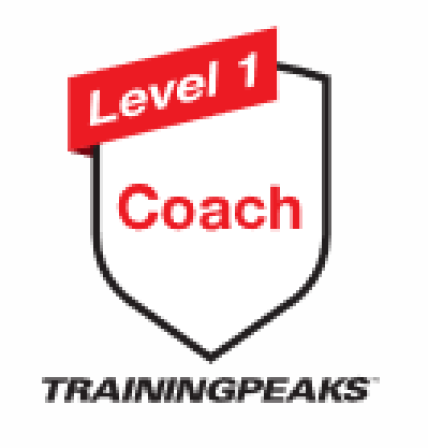Technique Drills Swim
The following ten drills are very basic and yet very powerful when done correctly. Another point to consider for swimming technique improvement is frequent video analysis to pin point exactly what areas of your individual technique to focus on and to insure you practice with proper technique drill form.
Drills 1 – 5, rotation, body position and kicking drills
1. Vertical Kicking drill:
The purpose of this drill is to make the kick efficient and improve the long-axis rotation. From a vertical position with your arms at your sides, use a flutter kick to keep your head above the water. This is the part of the drill where you work on your kick. You can even look down at your legs and make sure you are not bending the knees too much or bending forward at the waist. Utilize the upper muscles of the leg and make small fast movements. At first this may be hard to do for even 30 seconds, work your way up to one minute. Once this is comfortably achieved, you can start to work on your long-axis rotation. From the same vertical kicking position, rotate 90 degrees every 3 – 5 seconds to work on rotating from kick and core. Rotate the entire body as a unit from the kick and hips 90 degrees to the right, and then back to center, then 90 degrees to the left, back to center again. Repeat this for another minute and focus on starting the rotation from the kick and hips not the upper body.
2. Cork screw drill:
This drill helps to find a balanced and comfortable body position and to work on your long-axis rotation. This is the same drill as vertical kicking only we now move into the horizontal plane as we progress towards swimming. Keep your hands at your sides and again focus on turning the body from your kick and hips, do not lead with the head and shoulders. Unlike vertical kick, rotate your body 180 degrees, that way you are either on your belly of your back. Keep your head back and hips up to have an aligned body position when on your back. You should either be looking at the ceiling (when on your back) or bottom of the pool (when on your belly). Be sure to take your time and breathe out when your head is facing down, when your head is facing up, try to relax and breathe normally. You can stay on back and belly as long as you like until you feel ready to rotate properly. Be careful when reaching the end of the pool. Most pools have "warning" flags five yards from the wall to let you know that you are approaching the wall. In addition pool lane lines colors switch to all red at the same point so you can see to your side and do not need to turn to look for the wall. See if your pool has these and at that point you can roll over to your stomach and swim in to the wall. If there are no such indicators at your pool, find a way to make sure you do not hit your head.
3. Kick on side (KOS) drill:
One of the best drills to work on body position. This side position is one of the most streamlined forms a human can take. The objective here is to get comfortable with the head laying on the shoulder and having one goggle in and one out of the water. This is the ideal position for your head when you breathe. Lay on your side with your bottom arm stretched out and ear pressing onto the shoulder. This arm should be just under the surface of the water with the hand parallel to the bottom of the pool. The top arm should be on your side. Do a flutter kick and strive to maintain one goggle in and one goggle out of the water. The natural tendency is to start lifting the head to get the mouth out of the water to breathe. This actually makes you sink and work harder. If breathing while keeping a good head position is difficult, simply roll your head and look up, that should have your mouth and nose out of the water to enable you to breathe. Do one whole length on one side and another length on the other.
4. Kick on Side with one stroke:
This drill works the body position and also the rotation. We are again progressing towards swimming whole or regular freestyle. On this drill you perform the KOS drill as above, and every 5 seconds or so you take a recovery with the trailing arm and pull with the leading arm as you rotate over to the other side. The focus here needs to be on making a smooth rotation and keeping the body in alignment. The best way to do that is to start the recovery first and stay on your side until your hand passes your face, then start to bend the elbow of the leading arm and as the recovering arm enters the water pull with the other arm and roll over to the other side. Keep your neck in alignment with your spine (do not lift the head) as though there is that long-axis coming out the top of your head). Repeat over to the other side. Take your time; at first you may only do one rotation per length.
Drills 5 - 10, pulling drills
6. Catch up drill:
This drill is great for working on making the exchange of one arm for the other in front of the head; this assures that there is always an arm in front of the head to glide out on. This makes the body longer. In general a longer body moves faster. Think of the long hull design of speed boats. In addition the hands meeting in front of the head, is a great reminder to pull and rotate. If you breathe on both sides this drill can balance out your rotation. Continue to glide out on the arm in front as you recover with the other arm. When both arms are fully extended in front of your head you then pull with the opposing arm. When first doing this drill it is helpful to keep both arms in front of your head and kick a little while before switching arms. This gives you time to visualize a good pull with early elbow bending and good rotation during the power phase. As with all drills, take your time. The slower and more accurate you do these drills the more you will retain when you swim fast.
7. Catch up drill with thumb scrape:
This is the drill that will make sure you finish each stroke. Before you push off, extend your arm down your leg and scrape your thumb on your thigh. At the finish of each pull scrape your thigh in that same area. This is also the perfect drill to work on the release of the shoulder at the end of your stroke since with the touch you are sensitized to that part of the stroke.
8. Catch up drill with finger tip drag:
This twist on the catch up drill is to focus on the recovery and entry of your stroke. Here you want to lie on your side and slowly drag your finger tips through the water's surface as you recover. Ideally, you should see the palm of your hand as it passes about 8 – 12 inches (20 – 30 cm) to the side of your head. Finger tips stay in the water from the release phase of the stroke until the hand enters the water. After entry the arm extends in front of the shoulder to full extension and meets the other outstretched arm.
9. Single arm drill:
This drill is used to work all five phases of the stroke. It can be a tricky drill due to the fact that swimmers try to work on all five phases at once and it becomes a mess where nothing is really worked on. What invariably happens is that the swimmer makes the same mistakes in this drill as in their regular swimming. However if you focus on only one aspect or phase for an entire two length sequence (one arm one direction and the other coming back) the results are amazing. When in doubt of what to work on, focus on the early elbow bend at the beginning of the pull. This is something we can all improve on. If you have had your swimming analyzed on video and you can see in your minds eye other flaws to correct, such as a poor entry or recovery, then do another two length sequence focusing on just that phase. The drill can be done both with the non-stroking arm in front and back. The arm back is more advanced and actually works the rotation a little.
10. Fist drill:
This drill is specifically to be used to help you develop the early elbow bend at the beginning of your stroke. Many swimmers get little to no benefit from this drill because they lack the knowledge of how to perform it correctly. This drill must be done slowly and with very conscious thought about feeling pressure on your forearm as you begin your pull. This is the feedback that indeed you are bending the elbow early enough to have the feeling of pressure on your forearm as you pull against the water. What this drill does is take the hand out of the pull. In a sense this forces you to bend the elbow to try and "catch" some water. If you rush the strokes you will simply make the same errors you make in your regular swimming. In addition I have our swimmers never do an entire length with fists. The dynamic feeling of opening the hands and feeling the added power from the higher elbow is the positive feedback that makes the change carry over to your regular stroke. Since you actually need to struggle through the water a bit to feel this pressure on the forearm, it is best to do this drill without fins. This is the only drill where fins do not enhance the drill effect.
Tips for practicing your drills:
- Use fins (preferably short) on all drills except the fist drill, the fins provide a little more speed to allow you to focus on the drill and not survival.
- Never skip drills, if you have to skip any part of the workout, go without a main set.
- This is by no means an end all be all list of technique drills, however it is a great foundation. Similar lists exist for other strokes.
- Try to do 2 X 50 meters of each drill and one to 5 minutes of vertical kick drill each practice.
- Use a set of min/max 50's once a month to play with your stroke efficiency. This is simply a set of 50's where you count your strokes and time yourself. Add the time and stroke count. That total now becomes your gauge of efficiency. Lower it. Create a PR (personal record) and play with speed and stroke length to see how low you can get that total of time and strokes. I recommend a set of 6 X 50 meters min/max at least once per month. Just counting strokes can be misleading since you can get a very low stroke count by over-gliding and delaying strokes. What happens is you become a slow swimmer who takes fewer strokes.
Example: Let's say you swim a 50 meter in 40 seconds and take 45 strokes the total is 85. On the next 50 you swim faster and go a 35 seconds and it takes 48 strokes, the total is 83, keep doing 50's changing speeds and stroke rate to find the most efficient. As you improve your stroke, your PR on this will decrease. Have fun with it.
In addition to the fact that all swimmers stand to improve by doing these drills to "perfect" their own individual stroke, there are probably areas of your swimming that are really inefficient or sometimes even missing! A video analysis can usually show you what areas of your technique need more attention. If you have a straight arm pull, then an extra round of single arm and fist drills will help.
We have found that there are a few very common flaws that are the most common swimmers make. Seeing any of these in your video analysis allows you to put your focus on these areas, either by specific drills or a combination of drills that allow you to start to make changes.
 EN
EN  DE
DE 






